Tools of the Trade: Getting Creative with the Gadgets Artist’s Use to Paint
Ask any artist what their favorite art supply is and, as you could guess, you’ll get an eclectic and enlightening array of answers. Some swear by brand names and money is no object. Others find the art tools they need are just too dang expensive and they want to spend their good money on the paints and canvas they use. Or, they can’t find an “official” artists tool for a technique they have in mind, so an improvised art gadget is born. I’m in the recycle and repurpose camp. I usually challenge myself to look around the house or hardware store for economic answers to my art tool dilemmas. In this blog I’ll share a few gimmicks and gizmos that I have found either give me a cool effect or fill a need at a much lower cost than traditional art supplies.
GET INNOVATIVE WITH YOUR ART TOOLS
Think outside the box and repurpose every day items to get your next painting or art project done. Sometimes the perfect thing can be found in the kitchen, basement, garage or hardware store. Using “found objects” very often creates unexpected effects that can be incorporated into your arsenal of techniques.
Say you’re prepping a canvas with gesso to prime it for painting. You want something that adds more than just brush strokes and drips to the gesso foundation, so look around your kitchen and see what items you can utilize to achieve the desired effect. Check out the sink and see what your scrub brush will do for you! I’ve used my scrub brush technique several times and the effects can be seen in the evenly raised streaks in the painting below.
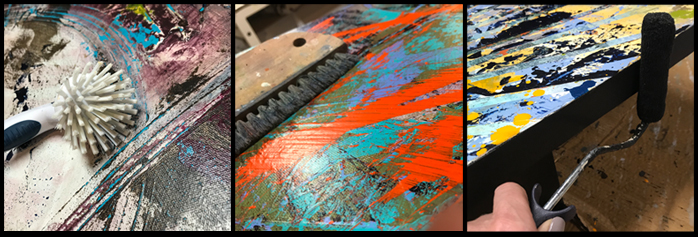
Trips to the hardware store with an open mind have led me to purchasing many unconventional “fine art” tools. On one of my hardware store excursions, I found a wide wallpaper brush that enabled me to have big swipes of texture in gesso backgrounds. This same brush also gives the appearance of a giant brush strokes when dipped in paint. It is particularly effective on large canvases where scale is important.
I also found small paint rollers and pans that are generally used for painting furniture and walls. They are now go-to tools I use on every painting because to me finishing the edges of my art in black with a traditional artists brush is tedious. I used to put it off until I had a back up of work to wrap up. Now, I can quickly roll the black paint on to the edges of all of my paintings to finish them out so they can be hung without frames. Each time I roll an edge I keep a wet sea sponge handy to wipe off any paint that rolls onto the face of the painting. When I’m done I wrap the roller and pan (still loaded with paint) in two plastic grocery bags throw a towel over it and shelve it to pull out for the next painting. The paint stays ready for several weeks saving it this way.
BRUSHES AND PALETTE KNIVES
For most artists there’s something addictive about really fine quality paintbrushes. I have my share of pricey brushes and I’ll be the first to admit I’m a Golden paint snob, too so that’s where my money goes. That said, when I’m washing in large areas of paint in the earliest stages of a painting there is nothing like the scrappy cheap brushes I find in the hardware store. They have rough uneven edges from the moment you open them up which is perfect for the really loose look I’m going for. They do wear down quickly but at $2.50 each I can afford to keep a stash of them in a few different sizes in the studio at all times.
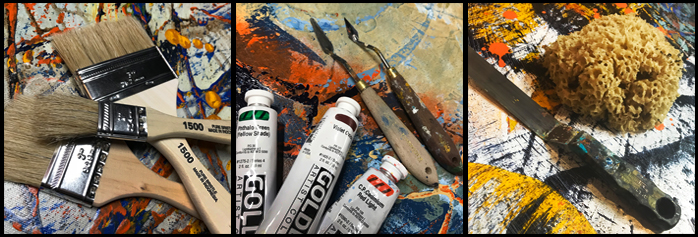
I’m also a palette knife junkie and employ knives of all sizes in my work. As I have stated in a previous post, these are a huge part of my process. I have found there are some great little ones at hobby type stores. I generally use large knives that include one cake spatula, a good art store palette knife and some cheap hobby store smaller knives. The down side of the hobby store knives are if you forget and leave them in the water they warp and rust easily. With the large scale of my art I don’t use the small ones very often so the hobby store versions work for me.
DROP CLOTHS AND CARDBOARD
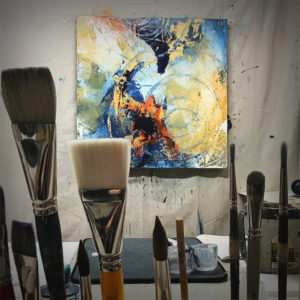
When I started painting I didn’t have an easel to consistently use so my studio set-up included drop cloths from the hardware store tacked to the wall. Two nails to hang canvases on and I’m set to paint. I like a lot of drips in my work so the absolute verticality of painting on a wall works really well for me. I have a large table in the studio that I keep a drop cloth on as well.
I repurpose every shipping box that my large canvases come in by cutting them open to lay out flat on my table. I can freely throw and drip paint and water making a complete mess and then change out the cardboard when my next round of canvases come in.
Another artist I know uses large white-coated panels called PureBond Pre-Primed Plywood from the hardware store on her tabletops and floors. It’s cheap, light weight and cleans up easily. She uses packing tape to seal the seams together on her “flooring.” This gives her studio a bright white reflective quality that helps her see color in its truest form. That will be my next studio upgrade!
There are thousands of “official” art supply resources out there pitching the latest and greatest in equipment and materials for artists. While quality materials are critical in some areas of an artist’s studio, a budget can be shot if you aren’t improvising here and there. Hopefully this smattering of ideas has inspired you to think outside the box and repurpose every day items to get your next painting or art project done. Do you have an unlikely tool that you have improvised with?
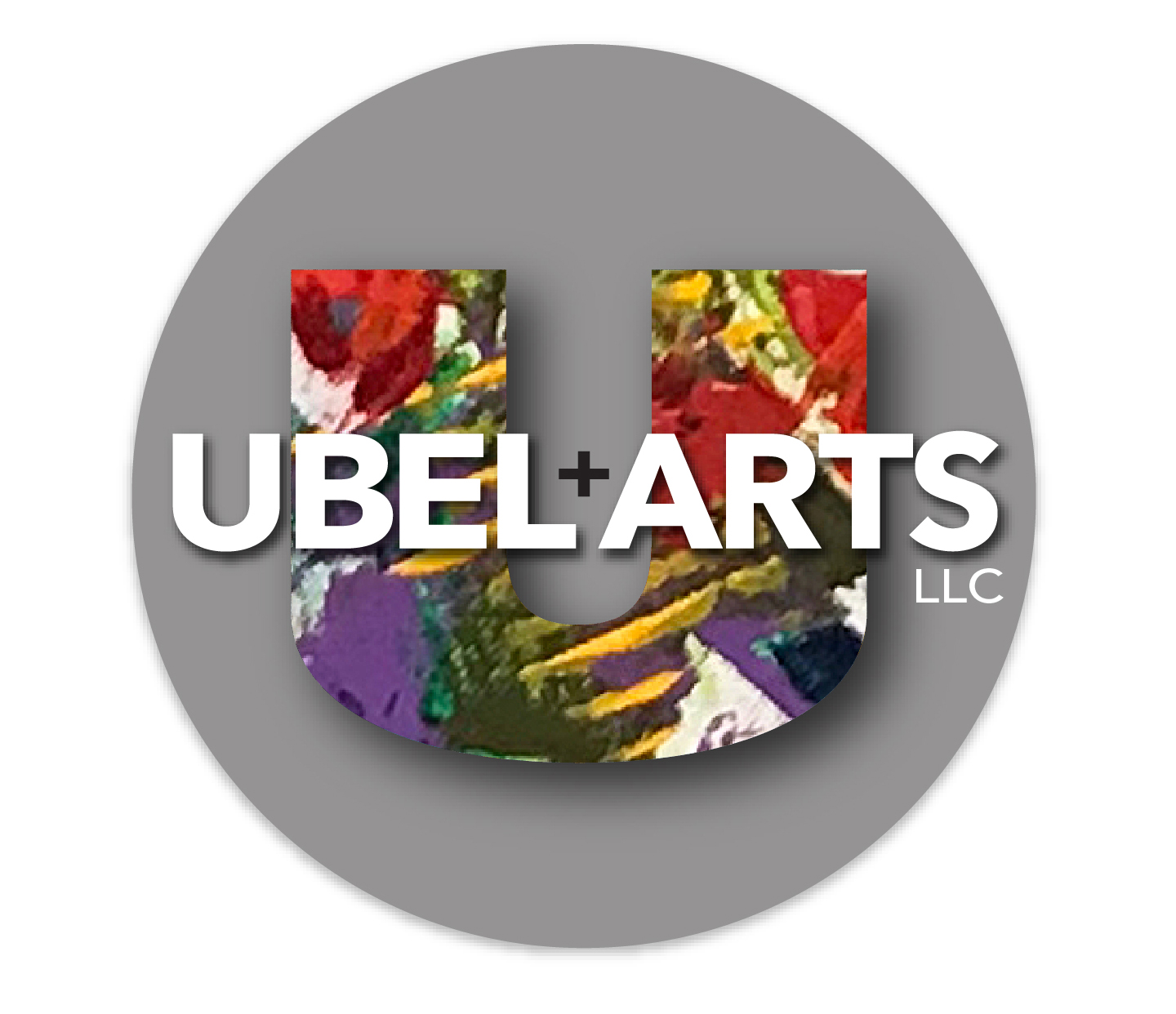
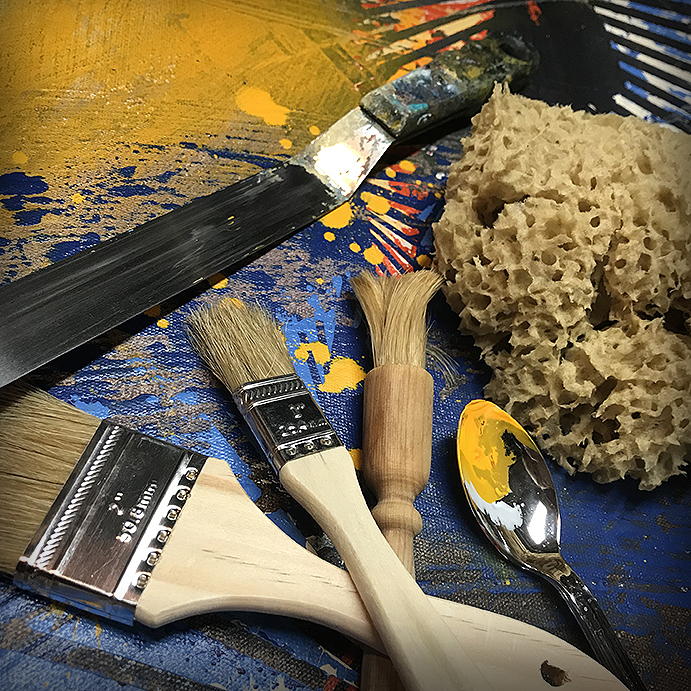
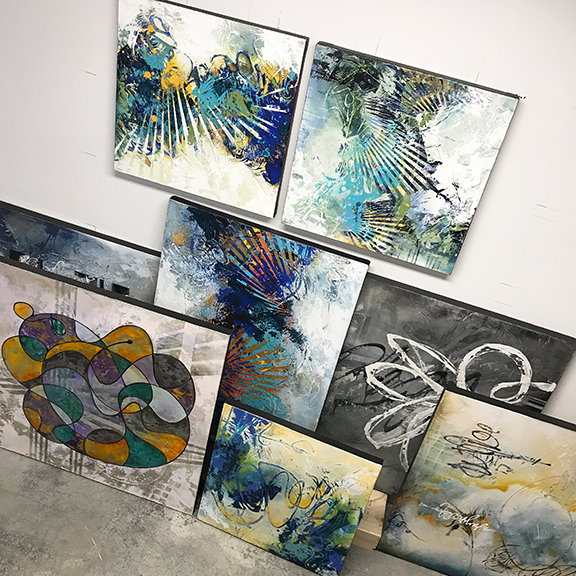
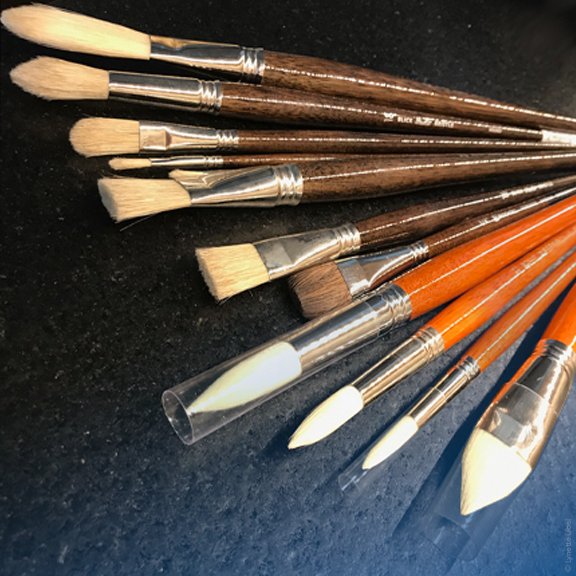
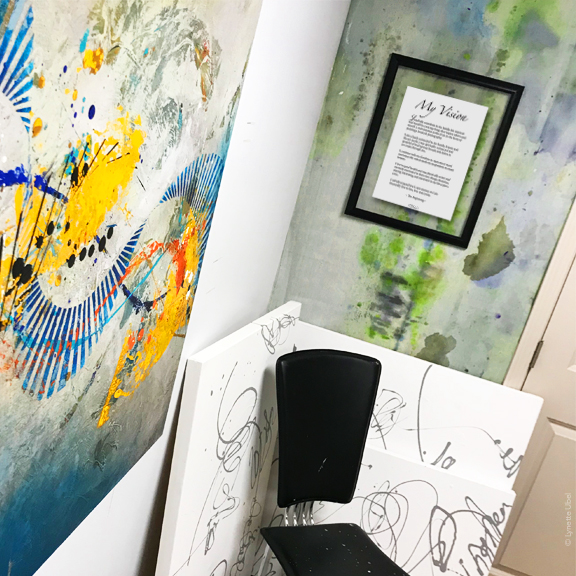
This Post Has 0 Comments